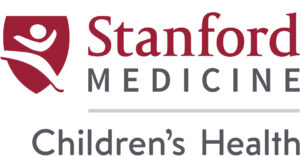In 1999, the Auxiliaries Endowment was created with $7 million in estate gifts from four members of the Association of the Auxiliaries for Children—a dedicated group of volunteers and supporters of Lucile Packard Children’s Hospital Stanford.
Today, that visionary investment and six “sister funds” added over time have swelled to a combined $34 million. Over the past 25 years, it has paid out a remarkable $20.3 million in grants to 125 programs and services benefiting children, families, and care team members in nearly every corner of the hospital.
This endowed gift is carefully invested—and each year it generates about $1 million in interest, which the Auxiliaries thoughtfully deploy to sustain crucial programs and seed inspiring new ideas. “It is working capital,” says Susan Lamkin, Auxiliaries Endowment Committee chair, “and our true legacy to the hospital.”
Lisa Cole, president of the Association of Auxiliaries, adds that “the Association of Auxiliaries receives grant proposals from dozens of hospital teams that total some $3 million in support each year. While we can’t fund everything, we’ve supported an incredible number of initiatives.”
These include establishing a patient education program and virtual bedside visits for families with newborns in the Neonatal Intensive Care Unit; expanding the Packard Paws facility dog program; and purchasing critical equipment such as a portable CT scanner, wireless fetal monitors, and life-changing diabetes supplies for children and adolescents on public insurance.
Six Sister Funds
Over time, the Auxiliaries established sister funds for the Teen Health Van, Social Services, Family Guidance and Bereavement, Critical Clinical Care, the Cleft and Craniofacial Center, and, most recently, the Stanford Chariot Program. The funds provide a reliable source of operating income for the programs totaling nearly $335,000 annually. “The creation of our endowment is the most transformational gift we have ever received,” says Jon Bernstein, MD, PhD, medical director for the Cleft and Craniofacial Center.
Family-Focused Care
A gift of $5 million built the Auxiliaries Endowment Treatment Center Waiting Room. The project is the fund’s largest award.
Critical Gift at a Critical Moment
Designed to be both nimble and responsive to evolving needs, it’s no surprise that the endowment was the source of the first significant gift to our hospital at the outset of the COVID-19 pandemic. The endowment committee answered the call for a second LightStrike Germ-Zapping Robot to add its ultraviolet disinfection capabilities to our hospital’s extensive cleaning measures.
Milestone Books for the NICU
Endowment awards generally range from $1,000 to $200,000. They often have an outsized impact, such as a $1,654 grant that helps nurses create keepsake books for families to celebrate milestones reached during a child’s stay in the NICU. Big wins include coming off the ventilator, first day outside of the incubator, and first time being held.
Tomorrow’s Cures
The endowment’s very first gift in 2000 supported cystic fibrosis research. In 2021, research became a renewed priority with the support of a study designed to harness the power of CAR T-cell therapy, our greatest advance since chemotherapy in improving outcomes for kids with difficult-to-treat leukemia. With the 30 top pediatric oncology centers in the country participating, the study will help our experts identify strategies to further improve outcomes and analyze biomarkers.
Immersive Technology to Alleviate Pain and Anxiety
“We both cried when we received the great news,” says anesthesiologist Tom Caruso, MD, PhD, recalling how he and his cofounder felt when the Stanford Chariot Program received the first of five endowment grants, the most awarded to a single program. The Chariot team develops immersive technology tools proven to calm young patients and reduce fear, anxiety, and the need for sedation and pain medication. “That initial seed grant validated our plans and our dreams for what this technology could bring to kids.”
Be part of this amazing legacy! Contact Jeanne Berube for more information.
This article originally appeared in the Fall 2024 issue of the Packard Children’s News.


